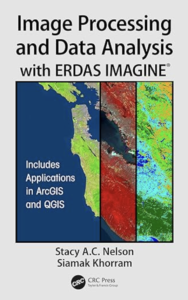Overview of IoU(Intersection over Union)
Intersection over Union (IoU) is one of the evaluation metrics used in computer vision tasks such as object detection and region suggestion, and is an indicator of the overlap between the predicted bounding box and the true bounding box.
The IoU is calculated using the following formula.
\[ IoU = \frac{\text{Area of Intersection}}{\text{Area of Union}} \]
where “Area of Intersection” represents the area of overlap between the predicted bounding box and the true bounding box, and “Area of Union” represents the area of the entire area of both bounding boxes.
IoU takes a value between 0 and 1. The closer IoU is to 1, the more the predicted bounding box exactly matches the true bounding box, and the closer IoU is to 0, the less overlap there is between the predicted and true bounding boxes.
The IoU is a common metric for assessing object detection performance and is often used as a threshold. For example, a predicted bounding box with an IoU above 0.5 may be considered a correct detection.
Algorithms related to Intersection over Union (IoU)
Intersection over Union (IoU) is an evaluation metric, not a specific algorithm itself. However, the algorithm for calculating IoU is simple and based on the following steps
- Calculation of bounding box overlap area:
- Calculate the overlap area (Intersection) between the predicted and true bounding boxes. This is calculated from the coordinate information of both bounding boxes.
- Calculation of the overall region of the bounding box:.
- Calculates the overall area (Union) of both bounding boxes. This is calculated from the coordinate information of both bounding boxes.
- Calculation of IoU:.
- Calculate the IoU by dividing the overlapping area of the bounding boxes by the overall area of the bounding boxes.
When calculating the IoU in the actual code, the following functions are usually used.
def calculate_iou(boxA, boxB):
# Calculate intersection (x1, y1, x2, y2)
xA = max(boxA[0], boxB[0])
yA = max(boxA[1], boxB[1])
xB = min(boxA[2], boxB[2])
yB = min(boxA[3], boxB[3])
interArea = max(0, xB - xA + 1) * max(0, yB - yA + 1)
# Calculate area of both boxes
boxAArea = (boxA[2] - boxA[0] + 1) * (boxA[3] - boxA[1] + 1)
boxBArea = (boxB[2] - boxB[0] + 1) * (boxB[3] - boxB[1] + 1)
# Calculate Union
unionArea = boxAArea + boxBArea - interArea
# Calculate IoU
iou = interArea / unionArea
return iouSuch algorithms can be used to calculate the IoU of the predicted and true bounding box.
Application examples of Intersection over Union (IoU)
Intersection over Union (IoU) is widely used in object detection and region suggestion tasks. Some examples of applications of IoU are given below.
1. object detection: in object detection tasks, the IoU of the predicted and true bounding box is calculated to assess the accuracy of the detection; detections with an IoU above a certain threshold (e.g. above 0.5) are considered accurate detections, while those with a low IoU may be treated as false detections
2. region proposal: in the task of region proposal, the IoU is used to assess the quality of proposed regions generated by different algorithms or models. Proposals with a high IoU between true and proposed regions may be selected as promising proposals.
3. semantic segmentation: in the evaluation of semantic segmentation, the IoU is used to assess the per-pixel agreement between the predicted and true segments. In semantic segmentation, the higher the IoU, the more accurate the segmentation is considered.
4. medical image processing: in medical image processing tasks, IoU is used in the detection of lesion and abnormality regions. In medical imaging, the higher the IoU, the more accurate the location and size of the lesion, and therefore the more important it is in the evaluation.
5. automated driving: in automated driving tasks, IoU is used for object detection and obstacle detection. Automated driving systems assess the IoU between the predicted and true object location to avoid collisions with other vehicles or pedestrians.
Challenges and measures for Intersection over Union (IoU)
Intersection over Union (IoU) is a widely used metric for assessing the performance of object detection and region suggestion, but it presents several challenges. The challenges of IoU and measures to address them are described below.
1. bounding box accuracy impact:
Challenge: IoU is an indicator of the degree of overlap between the predicted and true bounding box, but if the location or size of the bounding box is not accurate, the IoU evaluation will also be inaccurate.
Solution:
1. improve the accuracy of bounding boxes: use more accurate object detection algorithms or region suggestion algorithms to improve the accuracy of bounding boxes.
2. apply post-processing: apply post-processing methods to fine-tune the position and size of the bounding box to compensate for inaccuracies affecting the IoU evaluation.
2. impact of unbalanced datasets:
Challenge: unbalanced datasets affect the evaluation of IoU when certain classes of objects appear more frequently than others.
Solution:
1. adjusting class-specific thresholds: address imbalanced datasets by using different IoU thresholds for each class in the assessment.
2. adjust sampling: adjust sampling frequency for unbalanced classes to maintain class balance in the assessment of IoU.
3. the impact of bounding box size:
Challenge: the size of the bounding box affects the evaluation of IoU in the detection of small and large objects.
Solution:
1. multi-scale approach: perform object detection at multiple scales to reduce the impact of bounding box size.
2. use scale-adapted thresholds: use different IoU thresholds depending on the size of the object for evaluation and make the evaluation independent of size.
Reference Information and Reference Books
For details on image information processing, see “Image Information Processing Techniques.
Reference book is “

“

“

“



コメント